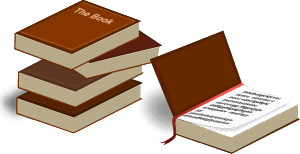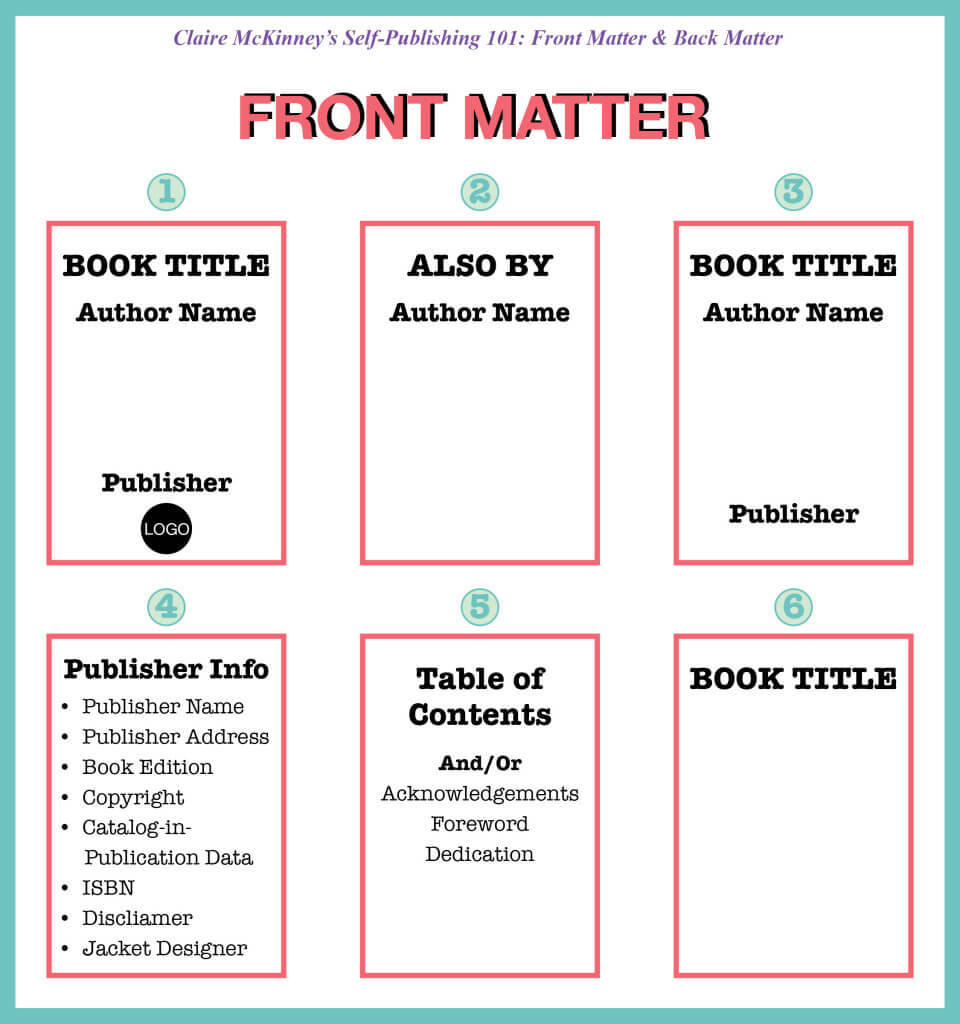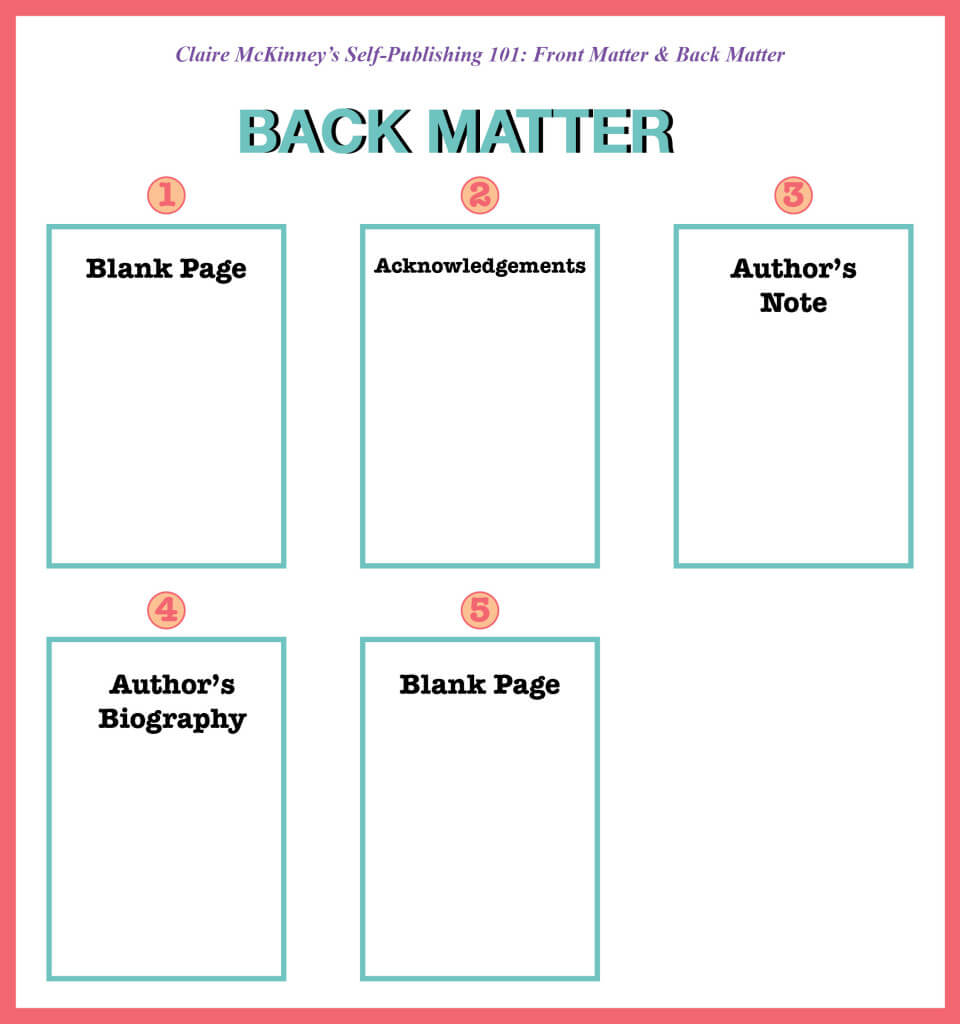 Our thanks to book publicist Claire McKinney of Claire McKinney Public Relations for this post!
Our thanks to book publicist Claire McKinney of Claire McKinney Public Relations for this post!
In a previous post I talked about how to make sure your book isn’t discarded by a review or media outlet because it “looks” self-published. I emphasized how important it is to have an editor and an interior book designer work with you on the final product.
These are Competitive Editorial Strategies for making your book stand out! Here I am going to reveal the mysteries of front and back matter, which is what we used to call it when I started in publishing. I have no idea of what people say about it now, but you will find this format in every traditionally published book and in more and more independently published ones as well. Keep in mind that as tedious as this post might seem to be, I had to do this for quite a few books when I was an editorial assistant years ago.
End Papers:
The very first and last physical pages of the book, often a higher quality, thicker paper that may or may not have illustrations. Generally speaking you will find these more often in hard cover books. It is expensive to do this and most books do not even have them.
Front Matter:
The next few pages of the physical book will include:
- On the front the title/logo and name of publisher
- On the back could be a list of additional titles by this same author
- Title page with the author/title/and publisher’s name with or without the logo
- On the reverse side you have all of the vitals related to the book such as the publisher’s name and address/the number of the edition of the book/the copyright information/the Catalog-In-Publication data/the ISBN/Disclaimer/jacket designer’s name/and other detailed items vary by publisher and book
- Next pages could be a Table of Contents/Acknowledgements/Foreword/Dedication
- Finally another page that restates the title of the book
Back Matter:
Yes, the very last pages after the story has been told will include:
- A blank page
- Acknowledgements page
- Author’s Note page
- Author’s Bio page
- Perhaps another blank page
As you can see the back matter leaves a bit of room for preferences on your part. There are some things like the acknowledgements that can be before or after the actual text. Regardless though just like not printing your book in courier font (I used to see quite a few of these) if someone opens the jacket and is immediately faced with the guts of the story and not a slower build of information, it will be noticed.
So check out some books on your shelves and see what I’m talking about. Not particularly exciting stuff here, but necessary nonetheless.
 Claire McKinney PR, LLC specializes in campaigns for books, authors, educational programs, websites, art, film, and other intellectual properties. They work carefully with clients to create messaging; branding concepts; and marketing and media strategies that integrate both traditional and new media opportunities.
Claire McKinney PR, LLC specializes in campaigns for books, authors, educational programs, websites, art, film, and other intellectual properties. They work carefully with clients to create messaging; branding concepts; and marketing and media strategies that integrate both traditional and new media opportunities.
See more of WWW’s contributors HERE.



Thanks for the simple explanation!
What are your thoughts about adding Book Group Questions to the back matter?
Would you recommend that or would you suggest they only be put on your website?
And why?!
Thanks!
I would include the Reading Group Guide (which is what the industry calls it) in the book and on the website. If you look at trade paperbacks from major publishers, they not only have the guide in the back, but sometimes they will put a burst on the front of the jacket that indicates it (or some other notation). The more resources you can offer readers the better.
What do you mean by “Author’s Note?”
Author’s Note is somewhat of general idea, but commonly you will see comments about something relating to the story; or maybe that the characters which representative of real people and real events, are fictional; or you could mention something that ties into the history of a book; or you can mention something about your writing experience like “When I first started writing this book, I expected…”.
I hope this is helpful.